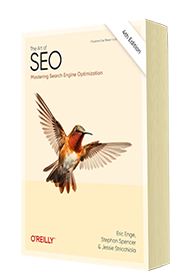Don’t Design – or Redesign – Your E-Mail Without Reading This
In your e-mail campaigns, the wrong tactics, the wrong words or the wrong HTML can doom your campaign.
According to studies, fully one-third of permission-based e-mails are not even delivered. If you’re lucky enough to reach the recipient’s inbox, you still have to worry about getting your e-mail opened and read.
For most recipients it is a split-second decision whether or not to delete your e-mail — a decision based almost entirely on the From line and the Subject line. And if that doesn’t sound harrowing enough, there are plenty of other hazards in the design and layout of the e-mail.
WINDOW OF OPPORTUNITY
So many designers of e-mail campaigns make the fatal mistake of designing the e-mail to be viewed in its entirety. E-mail doesn’t work like that. E-mail is scrolled through and in very small windows.
If you design the e-mail to look like a Web page and allocate valuable screen real estate at the top of your e-mail to masthead graphics and branding messages, you relegate the key messages to reside “below the fold” of the preview pane.
If your recipient doesn’t get your key message from what displays immediately in the preview pane, they probably won’t invest the effort in reading your e-mail or taking your desired action.
Cut to the chase. The first paragraph should be very easy to scan and should be a good overview of the key messages that you are trying to impart. The From line and the Subject line is where your branding goes — the From line in particular — rather than in gratuitous graphics.
Decide what is the one point that you want to get across and make that point in your Subject line. A Subject line of “September edition of ABC Company’s e-mail newsletter” is not compelling, as it offers no value proposition or clue as to the e-mail’s contents.
Scrolling through five screens within the preview pane is too much to ask of your recipient. If you have a lot of copy, move most of it to one or more landing pages. If your e-mail is full of images, move those to landing pages as well. People are not nearly as tolerant of slow download times in their e-mail clients as they are in their Web browsers.
PICTURE PERFECT?
Making life even more difficult for e-mail marketers, some e-mail clients like Outlook 2003 and Web mail services like Gmail don’t display images by default.
Thus, any important content locked up within images won’t be readily accessible to many recipients, particularly if the image doesn’t include an “alt” attribute (alternate text that displays when image loading is turned off).
Likely, the image height and width attributes were not defined, because if they were, the image placeholder box would take up an unnecessarily large amount of screen real estate.
Then there are the campaigns that don’t look “designed” at all.
These are the e-mails that could have been created by the office assistant using Microsoft Word. If the e-mail has too many conflicting styles — too many different font faces and colors and a lack of consistency in their use — then it will look like spam.
If you don’t have the resources to design a properly formatted, professionally designed e-mail campaign, don’t try to muddle through it. Rather, refrain from any formatting more extensive than bolded headings and bullet points.
Even able designers shouldn’t try to get too sophisticated with CSS (cascading style sheets), because some e-mail clients won’t be able to display them properly.
CSS is fine for setting font faces and sizes, but trying to lay out the page with CSS would be a mistake. Use tables instead. I know that is a very ’90s thing to say, but for e-mail marketing that is what you need to do. Try to use as few tables as possible, and avoid the use of nested tables.
Every graphically rich e-mail needs to have a message at the very top stating something to the effect of “If you can’t read this message, click here” which will take the recipient to a Web page containing a properly formatted version of the e-mail.
There is no point having such a message five lines down into the HTML code, because your recipient isn’t going to scour the HTML code looking for the link.
TEXT CONTEXT
Including within your e-mail a plain text version (using “multi-part MIME”) isn’t just good for recipients running e-mail clients incapable of displaying HTML. It also makes your e-mail more palatable to the spam filters. That’s because many spammers don’t bother making multi-part e-mails.
Within the HTML “part,” aim for a high ratio of text copy to HTML coding. Spammers often rely on images to hide text that will get picked up by the spam filters — phrases like “free access,” “best rates,” “big savings,” “call now,” “full refund,” “guaranteed,” “incredible” and “opportunity” — resulting in a low text to HTML ratio. Crafting an e-mail that will get past the spam filters is not straightforward.
Thankfully, spam-scoring tools exist, such as the free tool at www.gravitymail.com/spamscore.php (excuse the plug, please). It will run your e-mail through SpamAssassin, one of the most popular spam filters among Internet service providers, and generate a report detailing the penalties that you racked up.
Never send a campaign out before scoring it first.
ADDRESS MATTERS
As previously stated above, your From line should, in most cases, include your company name or brand name. Only include a personal name in the From line if the recipient is going to recognize that name.
If, for example, you are a hotel sending out a campaign to previous guests and your e-mail is “From” your general manager, nobody is going to know who that is and your e-mail will be deleted.
Oh, and by the way, don’t forget to include your physical address at the bottom of the message for CAN-SPAM compliance.
E-mail is a very different medium from the Web, and it requires a different approach. If you don’t see to its exacting demands and the seeming minutiae, your campaign will fall short.
You can’t just hire a Web designer to design you an e-mail template and expect them to do a good job. Nor can you simply bang out an e-mail in WordPad and expect it to get past the spam filters.
Welcome to e-mail marketing’s second epoch.
Stephan Spencer is president of search engine optimization agency Netconcepts and e-mail service provider GravityMail, both Madison, WI. Reach him at [email protected].

Chapter 6:
Keyword Research
From the fundamentals of link building to the nuances of natural linking patterns, virality, and authority.
Related Posts

Embrace Journaling, Tackle Tardiness, and Explore Our Energetic Echo
Here’s what I found inspirational, challenging, or just downright hilarious this week. What caught your eye? And, remember to check out this week’s great podcast episodes: Scaling a SaaS Company with Jason Morehouse “A crucial factor to business success is to find and take the personal path that works best for you.” — Jason Morehouse […]
Read More
Harrison’s harmony, conquering a blank canvas, & gut health hacks
Here’s what I found inspirational, challenging, or just downright hilarious this week. What caught your eye? And, remember to check out this week’s great podcast episodes: Be a Sales Game Changer with Fred Diamond “True elite sales professionals develop a dedicated mindset, proactive client interaction, and continuous self-preparation. They understand their client’s needs and enable […]
Read More
Rebirth of sleeper trains, 4,000 weeks is a long/short time, and golden age for medicine
Here’s what I found inspirational, challenging, or just downright hilarious this week. What caught your eye? And, remember to check out this week’s great podcast episodes: A Story Worth Retelling with Luke Storey “Aligned values are the cornerstone of successful partnerships, whether in business or life, as they shape our moral code, define our priorities, […]
Read More
